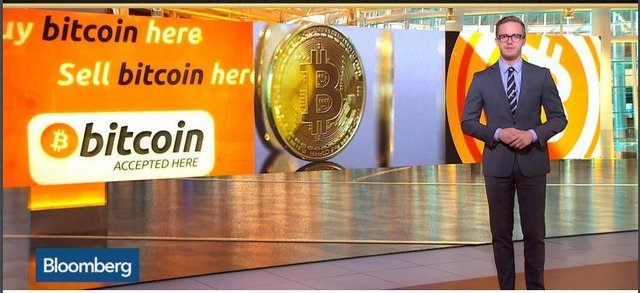A Quick History of Bitcoin

2008
- Bitcoin was invented by a mysterious figure known as Satoshi
Nakamoto in October 2008 when he published a research paper
called "Bitcoin: A Peer-to-Peer Electronic Cash System". There were
plenty of attempts at making digital money prior to Nakamoto’s
paper, but they all relied on a centralized system, similar to a bank.
Nakamoto was the first to use a blockchain as a way of establishing a
decentralized system. There is plenty of speculation over who exactly
Satoshi Nakamoto is, as that may not be his (or her, or their) real
name.


2009
- Nakamoto released the first version of the
Bitcoin codebase in January 2009, and
established the first block in the
Bitcoin blockchain, which allowed for
mining of Bitcoins to first take place.
The first exchange was between
Satoshi Nakamoto and a developer
named Hal Finney. - At first, Bitcoin had no exchange rate or
equivalency in fiat currency, but October 2009, it was established at
the rate of $1 = 1,309 BTC. The exchange rate was designed to cover
the cost of electricity that it took to mine and create Bitcoin.

2010
- In February 2010, the first Bitcoin market, named dwdollar was
created, and in May, the first transaction took place on it. A Florida
developer named Laslo Hanyecz paid 10,000 BTC to someone in
England, who in exchange, spent $25 to order a pizza for Laslo. At the
time of this writing, 10,000 BTC is worth approximately $40,000,000
USD. We really hope that was a good pizza. - In August 2010, a vulnerability was discovered in Bitcoin that allowed
hackers to generate 184 Billion Bitcoin. This briefly crashed the
currency. - Bitcoin exchange MtGox was created, and Bitcoin ends the year with a
market cap of a little more than $1 million USD.

2011
- Silk Road, an illegal online drug marketplace, is established and
accepts Bitcoin payments as a way to make anonymous transactions. - The value of Bitcoin quickly jumps, and for the first time 1 BTC is
worth more than $1 USD.

2012
- BitPay launches, allowing online merchants to accept payment in
Bitcoin. - Wikileaks starts accepting donations of Bitcoin, pushing the currency
into the media spotlight. - The first mining reward halving occurred on November 28, dropping
the amount of Bitcoin received for mining from 50 to 25.

2013
- Bloomberg starts experimenting with the inclusion of Bitcoin on their
terminals, speculative trading of Bitcoin begins in earnest, and the
value of Bitcoin explodes, ranging from $13 in January to over $1000
by the end of the year. - FINCEN releases initial guidelines regarding Bitcoin.
- The US government worries about Bitcoin’s ability to fund terrorism,
but recognises its usefulness and legality. A judgement in the
Trendon Shavers Ponzi scheme case establishes that Bitcoin can
legally be considered an asset of value with equivalent monetary
value.

2014
- US, UK, and China issue varying degrees of rules and regulation
regarding the use and taxation of Bitcoin, which makes mainstream
adoption by the financial industry possible. - Enterprise and more mainstream adoption pick up as companies like
Overstock.com and Microsoft begin accepting payment in Bitcoin. - In February, the major Bitcoin exchanges are hit with DDOS attacks,
MtGox, the largest exchange, is hacked, loses millions of dollars worth
of Bitcoin and quickly closes. This lowers the price significantly, but
prices remain in the $200-$350 range and stabilize. - In July, the first regulated Bitcoin investment fund is launched by
Global Advisors Bitcoin Investment Fund. - In October, TeraExchange executes the first bitcoin derivative
transaction on a regulated exchange.

2015
- Throughout 2015, the Bitcoin exchange rate remains relatively stable,
and Bitcoin gains steam as a legitimate currency. - Ross Ulbricht, the founder of Silk Road, is sentenced to life in prison,
signaling to the world that Bitcoin can’t be used for criminal purposes
without consequence. - New York State releases the BitLicense, the first ever comprehensive
set of governmental regulations on Bitcoin. It includes the
requirement that employees of companies with a BitLicense be
fingerprinted for the FBI. Ironically, many Bitcoin exchanges and
services around the world responded by banning New York users.


2016
- The second mining reward halving occurred on July 9th, dropping the
amount of Bitcoin received for mining from 25 to 12.5. - Bitfinex, a multi-signatory wallet provider, is hacked, resulting in a $72
Million loss. - The price of Bitcoin tops $1000.

2017
- August 1st, Bitcoin developers do a hard fork of the Bitcoin
blockchain, effectively creating two different types of Bitcoin, Bitcoin
Classic and Bitcoin Cash. - Huge gains are seen as speculative trading drives the price of Bitcoin
up past $4,000 per 1 BTC.


